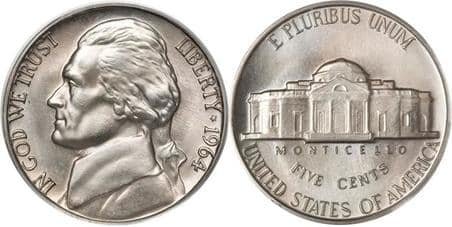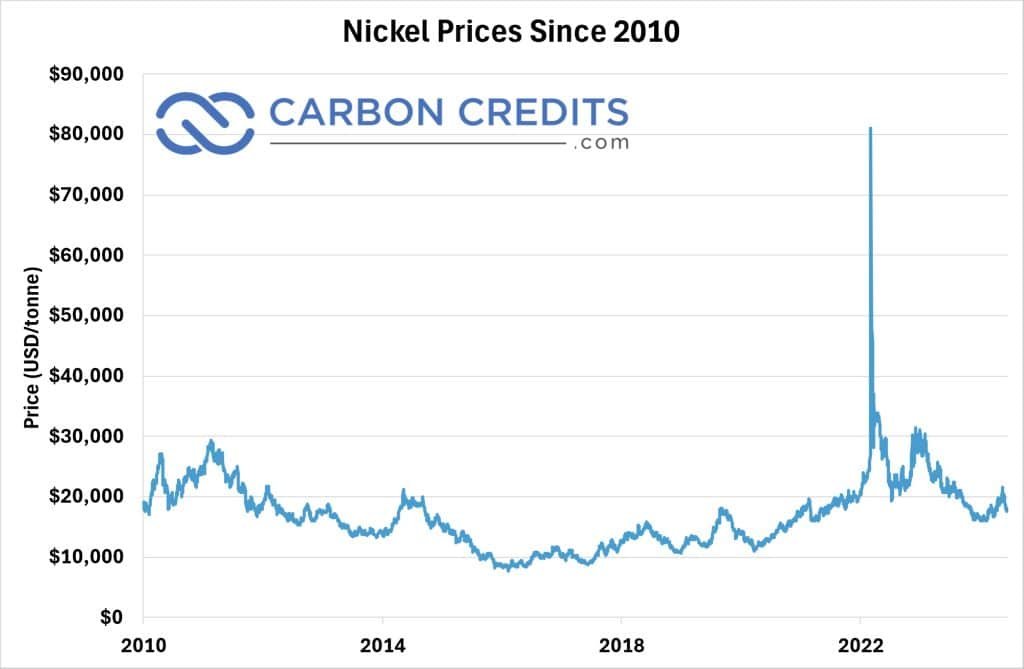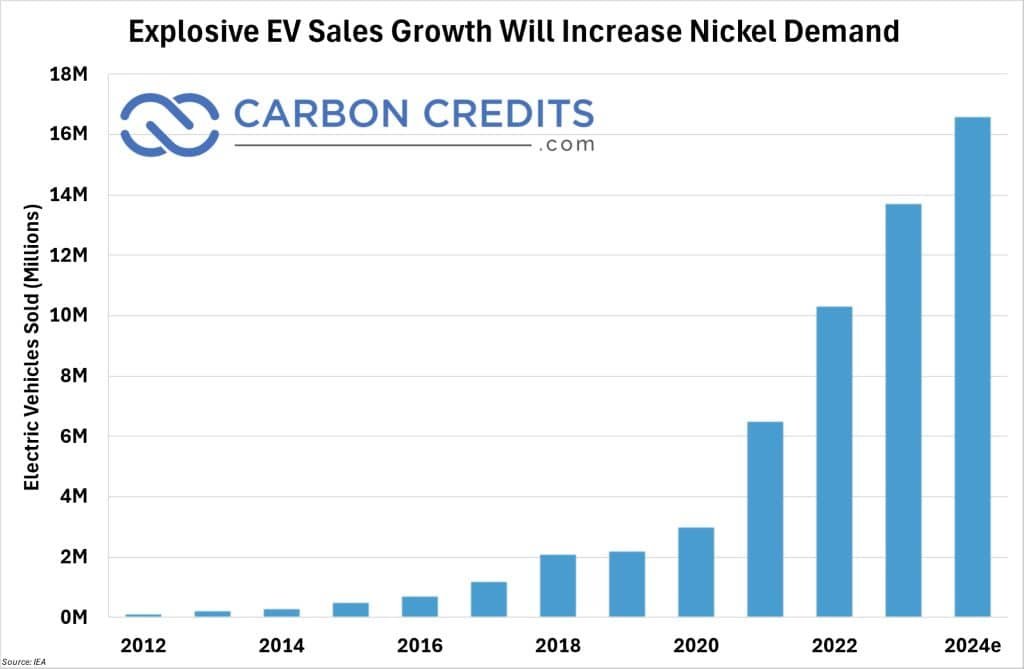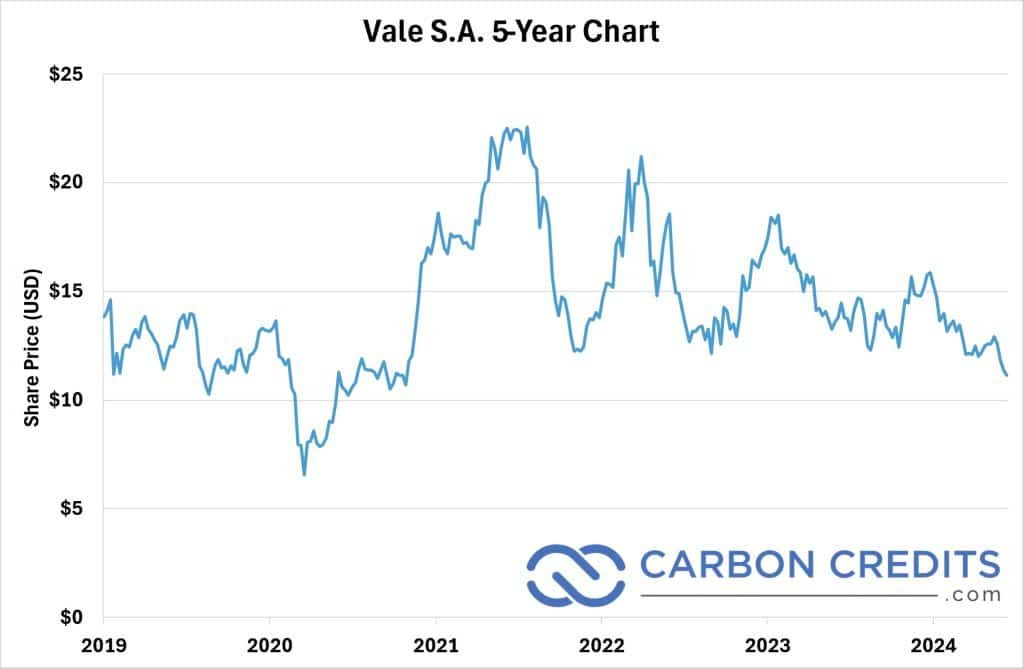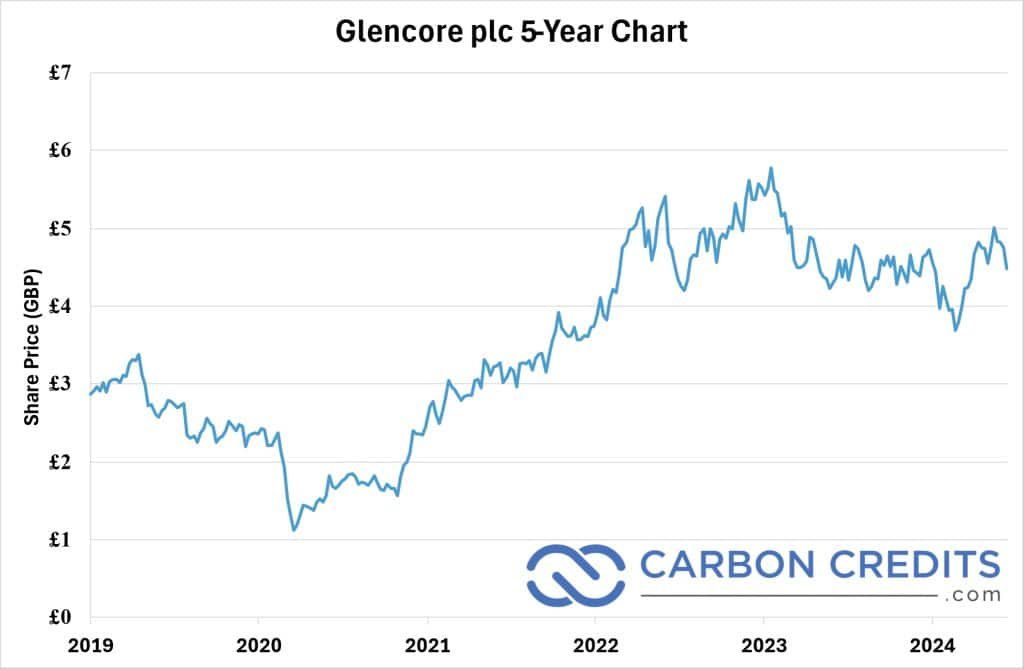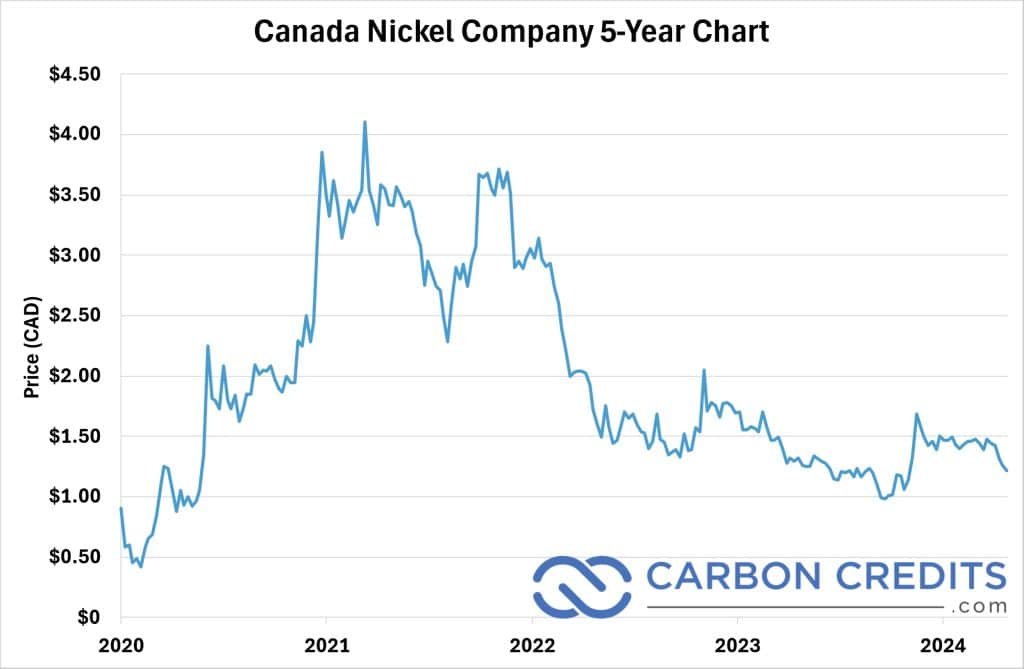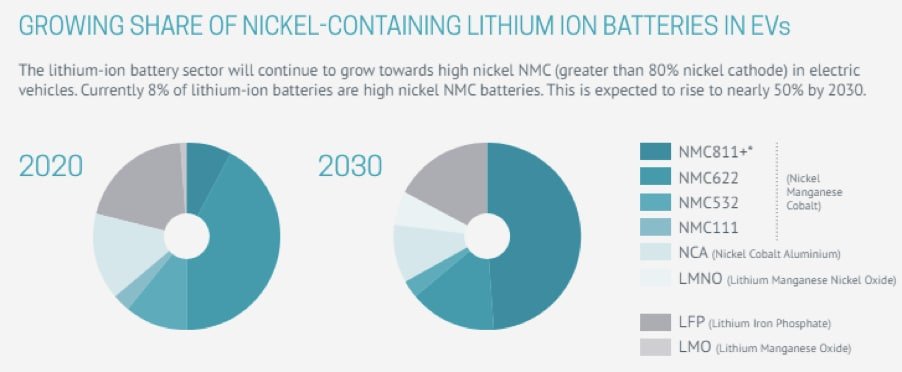A Critical Mineral Analysis
As we edge closer towards a more sustainable world, the demand for nickel is skyrocketing. Nickel’s inherent properties such as strength, ductility, and resistance to heat and corrosion make it indispensable across various industries, notably the production of stainless steel.
But more importantly, nickel plays a pivotal role in the makeup of the lithium-ion batteries used in electric vehicles (EVs). With its key role in clean energy transition, as well as general industrial use, nickel was added to the U.S. government’s critical minerals list in 2022.
This list is the result of the Energy Act of 2020, which defined critical minerals as those:
“essential to the economic or national security of the United States; have a supply chain that is vulnerable to disruption; and serve an essential function in the manufacturing of a product, the absence of which would have significant consequences for the economic or national security of the U.S.”
There’s a lot to chew on there, but in simple terms: critical minerals are those that the U.S. can’t function without, or those that the U.S. depends too much on antagonistic foreign powers for.
It’s not just the U.S., either – several other countries have their own critical minerals lists, such as Canada, the EU, South Korea, and Japan – and they all have nickel on them.
But despite a brief spike in early 2022 when the Russian invasion of Ukraine drove prices up on fears of a potential supply disruption, nickel prices have stayed fairly stable over most of the past decade, generally trading in the band between $10,000-$20,000.
Though nickel is indeed crucial to our net zero future, a healthy surplus of mine supply combined with a global slump in steel demand have offset the strong growth of the EV market (shown below), leading to nickel’s current weak price environment.
Still, though the near-term outlook for nickel isn’t strong, the green transition is expected to widen the gap between supply and demand.
International Energy Agency (IEA) Forecast
The International Energy Agency (IEA) has forecasted that at the current pace of development, nickel demand will outstrip supply by roughly 25% in 2030, yielding a more positive long-term nickel prices outlook.
In the meantime, here’s a close look at the top three nickel stocks that are poised to capitalize on this growing demand, with a focus on their production capabilities, market positioning, and forward-looking strategies.
1. Vale S.A. (NYSE: VALE) Market Cap: US$48 Billion
As the world’s second largest producer of nickel in 2023, Vale stands out with operations spanning Brazil, Canada, Indonesia, and New Caledonia.
- Notably, the company’s Long Harbour nickel processing plant in Canada set a benchmark in low-carbon nickel production, emitting about a third of the industry’s average CO2 levels.
Last year, Vale produced 164,900 tonnes of nickel, 8% lower than the year previous but in line with guidance due to ongoing development at some of its mines.
This scale, combined with its commitment to sustainability, positions Vale robustly in the face of escalating demand, especially from the EV battery sector. The company’s strategy to expand nickel output while adhering to environmental standards makes it a compelling choice for investors focusing on sustainable growth.
The main drawback with Vale lies in the fact that the company is a diversified miner that also produces iron ore and copper. In particular, nickel only represented 8.8% of the company’s operating revenue in 2023.
Still, this inclusion of other business segments isn’t necessarily a bad thing, as it does help lower the risk of the company as an investment. Those looking for a more conservative pick that still retains exposure to the growth of the nickel market can definitely consider Vale as a pick for their portfolios.
2. Glencore plc (LON: GLEN | OTC: GLNCY) Market Cap: US$70 Billion
Next on our list is the world’s third-largest producer of nickel, UK-based Glencore. Like Vale, Glencore is a diversified miner that operates in several different markets.
Last year, Glencore produced 97,600 tonnes of nickel. While that only accounted for a modest 4.2% of Glencore’s total revenue for 2023, one thing that sets Glencore apart from Vale is that it’s significantly more diversified than the latter, with an energy segment on top of its metals and minerals segment.
Glencore’s broad mandate combined with its size make it a relatively safe investment, and the company has done very well since the post-COVID market lows. The company has also received positive attention for its very aggressive emissions reduction targets that include a 25% reduction in Scope 1, 2, and 3 emissions by the end of 2030 and a 50% reduction by year-end 2035 against a 2019 baseline.
Many major companies still refuse to even report Scope 3 emissions, let alone set near-term emissions reduction targets for them, so Glencore is definitely ahead of the curve with their climate action plan.
Last but not least, Glencore’s primary listing on the London Stock Exchange makes it easier for Europe-based investors looking for nickel exposure, though the company also has foreign ordinary shares and ADRs listed on the U.S. OTC market.
3. Canada Nickel Company (TSXV: CNC | OTC: CNIKF) Market Cap: US$160 Million
Finally, our last company is one for aggressive investors with a healthy appetite for risk, who are looking for more direct exposure to the growth of the nickel market compared to the diversified miners mentioned above.
Canada Nickel is a junior nickel miner based out of – you guessed it, Canada. While this may not seem like it warrants a special mention, it’s worth noting that the U.S. imports over 40% of its nickel from its northern neighbour. This makes Canada an extremely attractive jurisdiction for nickel producers, as a major buying market is only a short hop across the border.
The Crawford Nickel Project
The company has done an excellent job of consolidating nickel projects in the historically prolific Timmins mining camp in Ontario, one of the largest gold mining districts in the world. While nickel has traditionally been mined primarily as a by-product in the area, Timmins has struck proverbial gold with its flagship Crawford Nickel Project.
- Right now, Crawford is actually the world’s second nickel operation by reserve size. Based on its bankable feasibility study, it’s projected to be the third largest nickel mine in the world in terms of annual production once it’s built.
Currently, Canada Nickel is still finishing the funding and permitting process for Crawford. The final decision on whether or not to build the mine is expected to happen mid next year, with first production expected by year-end 2027 if all goes according to plan.
Though Canada Nickel has acquired a number of other projects in the area, Crawford is definitely the main draw here. It’s expected to be a low-cost mine with robust economics and a lengthy 41-year mine life. The company’s novel approach to carbon storage, integrated into its mine plan, would also make Crawford not just a low-carbon-emission mine, but actually net carbon negative over its lifetime.
As good as all this sounds, however, it’s important to remember that as a junior miner that isn’t even producing any nickel yet, Canada Nickel is a highly speculative investment that should only be considered by investors with high risk tolerance.
While a number of major companies already have their eyes on Canada Nickel, with big names like Agnico Eagle, Samsung, and Anglo American taking significant ownership stakes, there’s no guarantee that Canada Nickel will be able to secure the funding and permits necessary to build a mine at Crawford, or that the company will succeed even if they do.
Still, if you’re looking for an investment with pure play exposure to nickel and have the right risk profile, Canada Nickel is one company you don’t want to miss.
A Brief Note on Norilsk Nickel (Nornickel)
Now, those of you who’ve looked at the companies above might be wondering something: why wasn’t the world’s largest nickel producer, Norilsk Nickel a.k.a. Nornickel, included?
Unfortunately, despite its attractiveness as the world’s largest nickel producer that’s also the closest thing you can get to a pure play major, there’s one major issue with Nornickel: it’s a Russian company.
Following the Russian invasion of Ukraine in 2022, Nornickel was one of several companies sanctioned by the West, leading to the stock getting delisted from both the American as well as the London stock markets.
As of June 2024, Nornickel is still listed on the Moscow Exchange. However, given that the Russian government has restricted foreign investors in “unfriendly” countries from buying and selling securities on the Moscow Exchange, the company is inaccessible to the average investor for the foreseeable future.
Nickel’s Importance in a Zero Emissions World
The global transition towards renewable energy and the exponential growth of the EV market are key drivers for demand growth for nickel. And lets not forget about lithium’s importance in “lithium ion” batteries along with nickel for new EVs.
RELATED: LiFT Power ($LIFFF), a fast developing North American lithium junior, is worth a look in the lithium space.
The companies listed above aren’t just mining firms – they’re also strategic players in the global shift towards sustainable energy. Investing in these stocks offers potential exposure to a critical resource that powers both today’s industries and tomorrow’s technologies.
Each company’s focus on expanding production capabilities while maintaining environmental and ethical standards provides a strong foundation for growth.
As the net zero transition continues accelerating the pace of EV adoption and hence the growth of the nickel market, make sure you keep your eyes on these three companies.

